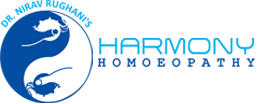Acne
Types of Acne
"No matter what is the type of acne, it is always a cause of distress for the patient."

There are different types of Acne which affect people; some are milder in nature and others that are very severe. Discussed here are some of the common variants:
Acne Vulgaris - the common variety
This is the most common form of acne. Acne vulgaris involves multiple lesions such as whiteheads, blackheads, papules, pustules and nodules at various stages of development.
Acne Rosacea - the picture's not so rosy
This form usually affects the middle third of the face and is characterized by persistent redness of the forehead, lower part of nose, cheeks and chin. This is accompanied by red bumps, pimples and blemishes. The blood vessels on the face are seen more prominently in this condition. Acne rosacea is more common in women but it tends to be more severe in men. It largely affects adults (30 to 50 years of age) and especially those with a fair skin.
Acne Conglobata - the severe variant
Acne conglobata is more common amongst males as compared to females and the average age of onset is usually between 18 and 30 years. It is a chronic and severe form of acne which is characterized by severe inflammation, deep abscesses and severe scarring of the skin. There is formation of deep ulcers under the nodules leading to Keloid-type of scars.
Acne Fulminans - too much, too soon
Acne fulminans is a form of acne which is characterized by sudden onset of highly destructive inflammation. The symptoms are of severe nature and often may lead to ulcerations. The patient may also present with fever, inflammation and aching of joints (hips and knees).
Nodulocystic Acne - hard and painful
This is also one of the severe forms of acne and is characterized by cysts, which may measure several centimeters in diameter. The cysts may occur singly or in multiples over the face, neck, scalp, back, chest and shoulders. The cysts are generally filled with thick, yellow pus-like fluid and can be quite painful.
Gram Negative Folliculitis - the stubborn one's here
This includes inflammatory lesions which are common in people who are undergoing long term antibiotic treatment for severe acne. This form is usually resistant to many antibiotics.
